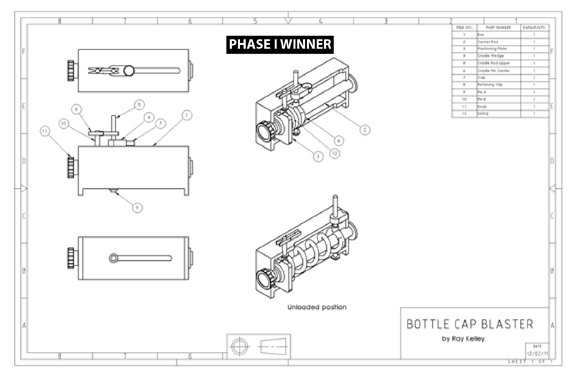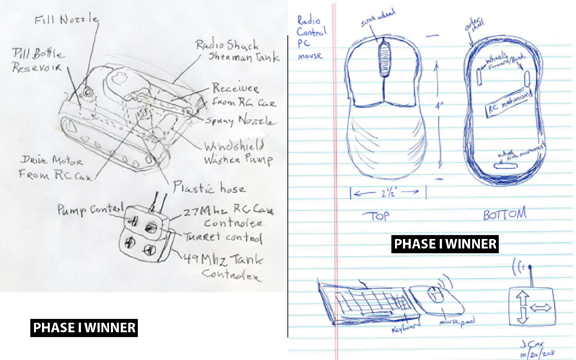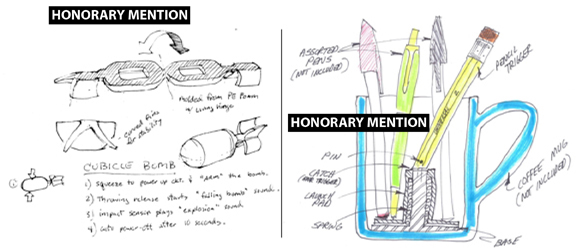January 3, 2012
Just a few days before the holiday break, two honorary judges and I began reviewing the entries received for the DE cubicle toy design contest. By honorary judges, I meant to say I was honored by their willingness to help me score and pick deserving submissions. The honorary judges were Josh Mings, who maintains the SolidSmack blog, and Tony Lockwood, DE‘s founding editor and current editor at large. I’d like to express my gratitude and thanks to them for their precious time and brain power.
I’d like to thank everyone who participated in Phase I of the contest! The diversity of the ideas submitted, along with the creativity and playfulness they showed, convinced me that, even in their daily grinds, even amidst tight deadlines, our readers still retain a childlike inventive spirit. We were amused, inspired, and fascinated by many of the submissions, but we had to eventually narrow the choices down to three.
After we scored the submissions independently and totaled up our scores, three emerged with the highest scores:
- Mark Norwood for his water-spraying Sherman tank.
- Jason Cox for his remote-controlled PC mouse.
- Ray Kelley for his bottlecap blaster.
Cox’s mouse is basically “The shell of a wired or wireless PC mouse with a radio contolled mechanism inside for forward/back and side-to-side movement.” It doesn’t take a lot of imagination to see how this device would induce laughter. Swap your colleague’s real mouse with Cox’s mouse. And, as your colleague reaches for the mouse, put him or her through a cat-and-mouse chase across the desktop. My guess is, for best results, you should be in a position to observe the perplexed coworker’s reaction throughout the process.
Kelley’s bottlecap blaster is “a spring-loaded, cross-bow-like launcher for bottlecaps.” Kelly emphasizes it’s designed to work with “harmless” ammunition. For effectiveness, there’ll be an “Elevation feature to allow for angled aim: Stabilization plate underneath housing that hooks over edge (desk, counter, etc.) to allow for bracing when loading.”
There were two other entries that came in closely behind the three winners by just a few points less. They were Jeff Mullikin’s modified coffee mug with a pencil trigger and John Knittle’s cubicle bomb (modeled in PE foam).
In Phase II, Three finalists are invited to submit their ideas as 3D models (in IGES, STEP, or another neutral format), along with a short essay (400-800 word) on the design challenges they encountered and how they solved them. Essays will be published online at DE‘s Virtual Desktop blog, followed by podcast interviews. DE editors, honorary judges, and the public will weigh in on each idea, along with suggestions on how to improve it.
Judges will be scoring Phase II entries based on:
- Making the most of CAD/CAM/CAE software
- Taking advantage of the computing and graphics horsepower in their current system
Subscribe to our FREE magazine, FREE email newsletters or both!
About the Author
Kenneth Wong is Digital Engineering’s resident blogger and senior editor. Email him at [email protected] or share your thoughts on this article at digitaleng.news/facebook.
Follow DE








